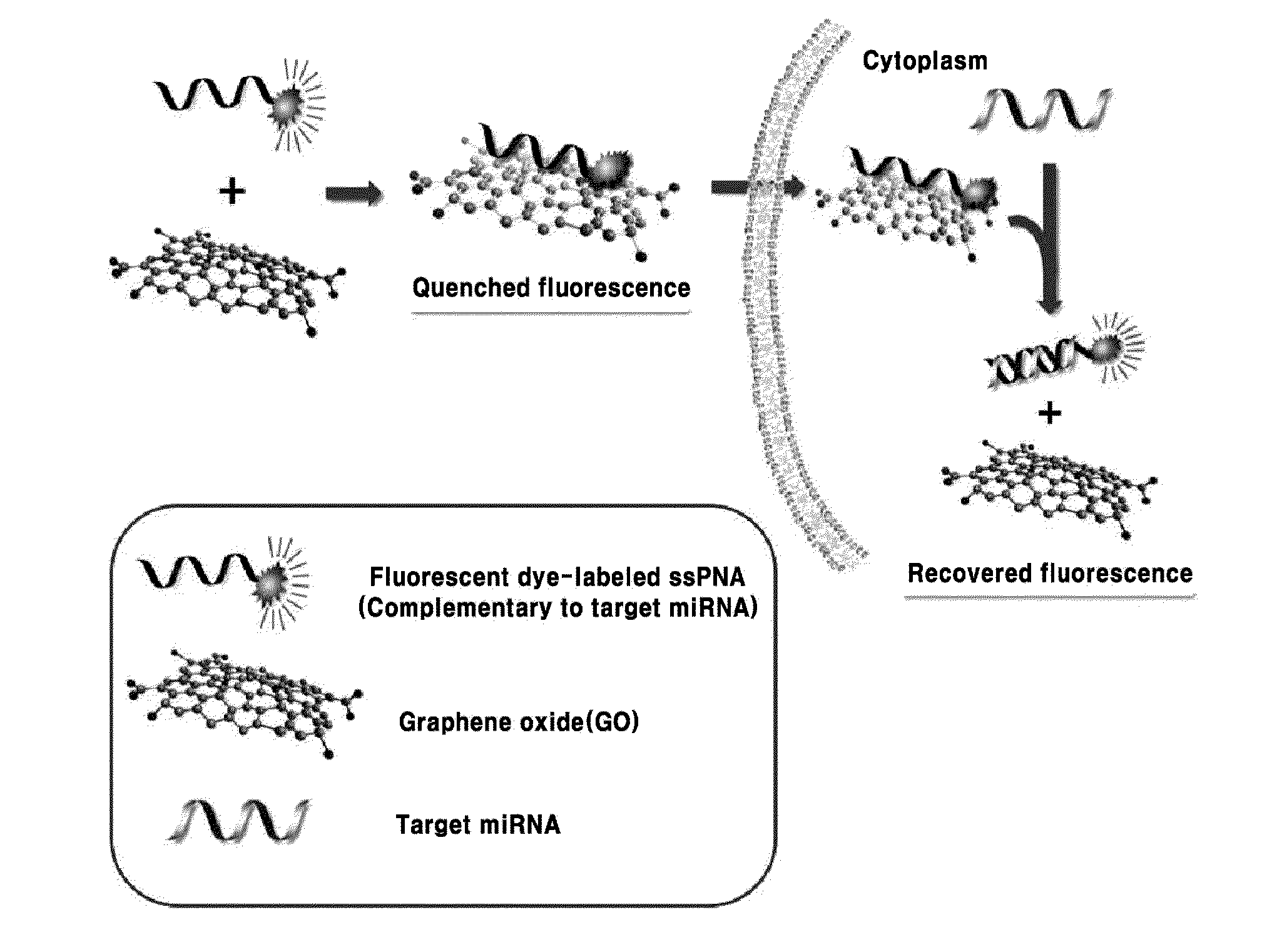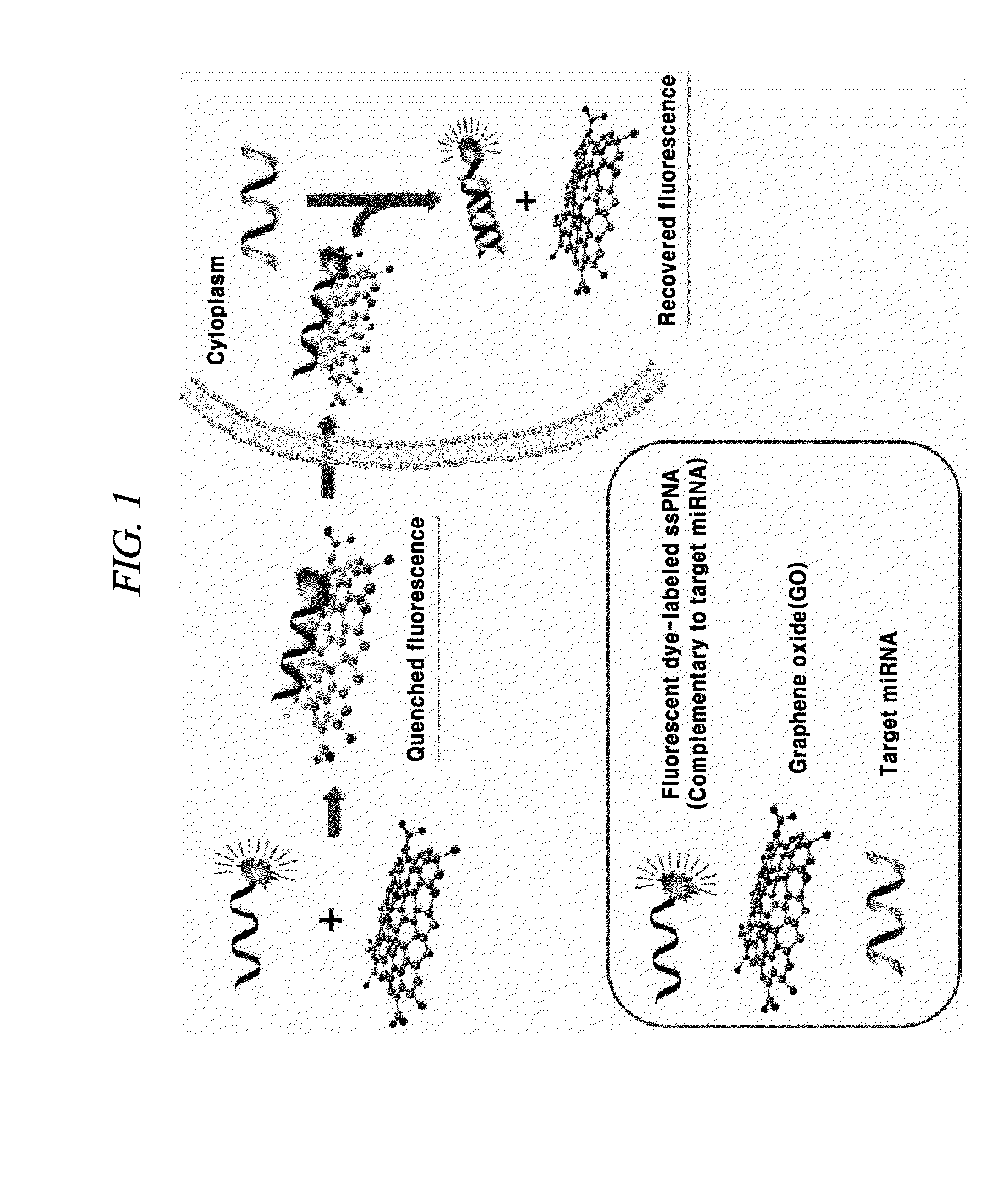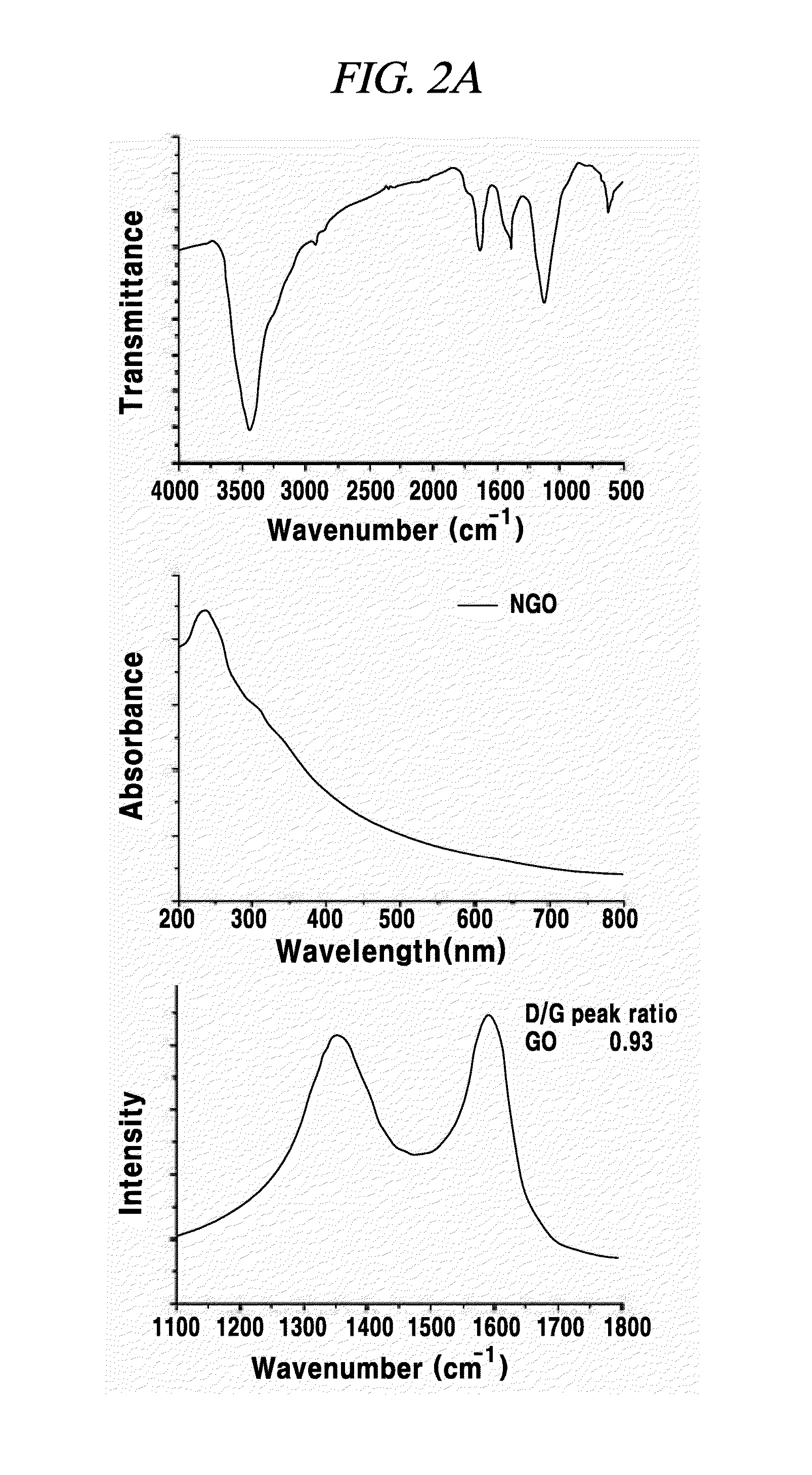Composition for detecting nucleic acid and method for detecting nucleic acid using same
- Summary
- Abstract
- Description
- Claims
- Application Information
AI Technical Summary
Benefits of technology
Problems solved by technology
Method used
Image
Examples
example 1
Preparation and Characterization of Graphene Oxide
[0079]In an example, a graphene oxide sheet was prepared according to the modified Hummer's method which is commonly known in the pertinent art. First, 0.5 g of NaNO3 (produced by Junsei Co., (Japan)) and 23 mL of H2SO4 (produced by Samchun Chemical Co., (Seoul, Korea) were mixed while being intensely agitated within a water tub filled with ice. Then, 3 g of KMnO4 (produced by Sigma-Aldrich Co., (Missouri, USA) was slowly added to the mixture. After the KMnO4 is added, the solution was moved into an ice bath at a temperature of 35° C. and agitated therein for 1 hour. Then, 40 mL of distilled water was added, and the temperature of the water tub was raised to 90° C. for 30 minutes. Then, 100 mL of distilled water was added again. Thereafter, by adding 3 mL of 30% H2O2 (produced by Junsei Co., (Japan)) in drops, the color of the solution was changed from dark brown to yellow. Then, the synthesized graphene oxide solution was filtered t...
example 2
Adsorption of a Single-Stranded PNA Probe to Graphene Oxide and Observation of Resultant Fluorescence Quenching
[0081]Sequences of miRNAs and complementary sequences of PNA probes used in the present example and all of the following examples are specified in Table 1 as bellows.
TABLE 1Base Sequence ofTargetBase SequenceFluorescence-Organ-miRNAof miRNAlabeled ProbeismmiRNA-UAGCUUAUCAGACUGAUGFAM-OO-Human21UUGATCAACATCAGTCTGATAAGCTAmiRNA-UCCCUGAGACCCUAACUUROX-OO-Human125bGUGATCACAAGTTAGGGTCTCAGGGAmiRNA-UUAAUGCUAAUCGUGAUACy5-OO-Human155GGGGUCTATCACGATTAGCATTAmiRNA-UUUGGAUUGAAGGGAGCUFAM-OO-Plant159CUATAGAGCTCCCTTCAATCCAAAmiRNA-UAGCACCAUCUGAAAUCGFAM-OO-Human29aGUUATAACCGATTTCAGATGGTGCTA
[0082]In the above table, the left sequences of nucleic acids are base sequences of miRNAs, whereas the right sequences of nucleic acids are base sequences of PNA probes that are complementary to the respective base sequences of the miRNAs. The miRNA-159 was used as a negative control group. The miRNA used in...
example 3
Evaluation of Oligonucleic Acid Containing a Fluorescent Material, for Detecting miRNA as a Target Material
[0086]Numerous biomolecules exist in a cell. Therefore, in case of graphene oxide having high adsorbability for nonspecific biomolecules, non-specific desorption of a probe may be occur even under the absence of a nucleic acid as a target material, thus emitting a fluorescence signal. In view of this, in the present example, miRNA detection efficiencies of a PNA probe or DNA probe having a base sequence complementary to that of a target miRNA were compared to investigate whether the PNA probe is more suitable than the DNA probe.
[0087]Cells of MDA-MB-231 expressing the miRNA-21 as one of breast cancer cell lines selected as a model disease cell line were collected, and a cytolysate was acquired by repeating freezing an defrosting of the cells. A DNA or PNA probe complementary to the miRNA-21 was used while labeling the DNA or PNA probe with an organic fluorescent pigment FAM.
[00...
PUM
| Property | Measurement | Unit |
|---|---|---|
| Size | aaaaa | aaaaa |
| Size | aaaaa | aaaaa |
| Length | aaaaa | aaaaa |
Abstract
Description
Claims
Application Information
 Login to View More
Login to View More - R&D
- Intellectual Property
- Life Sciences
- Materials
- Tech Scout
- Unparalleled Data Quality
- Higher Quality Content
- 60% Fewer Hallucinations
Browse by: Latest US Patents, China's latest patents, Technical Efficacy Thesaurus, Application Domain, Technology Topic, Popular Technical Reports.
© 2025 PatSnap. All rights reserved.Legal|Privacy policy|Modern Slavery Act Transparency Statement|Sitemap|About US| Contact US: help@patsnap.com



